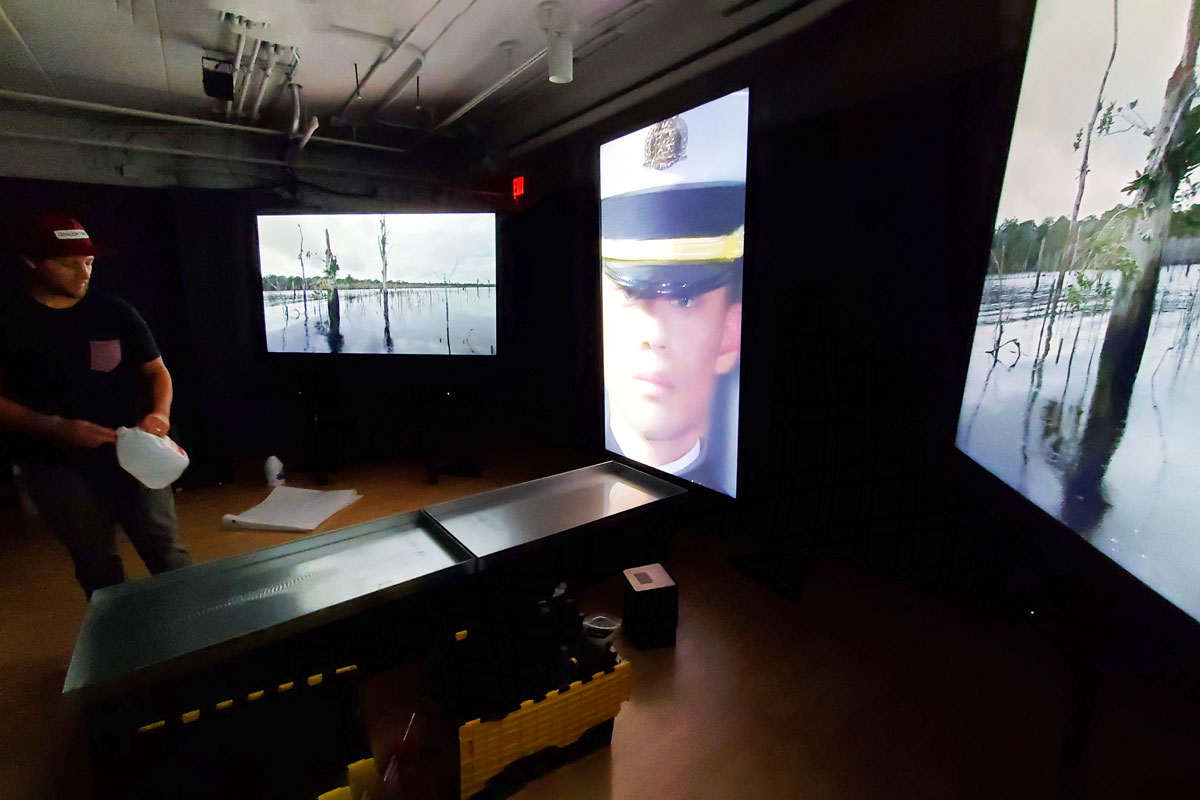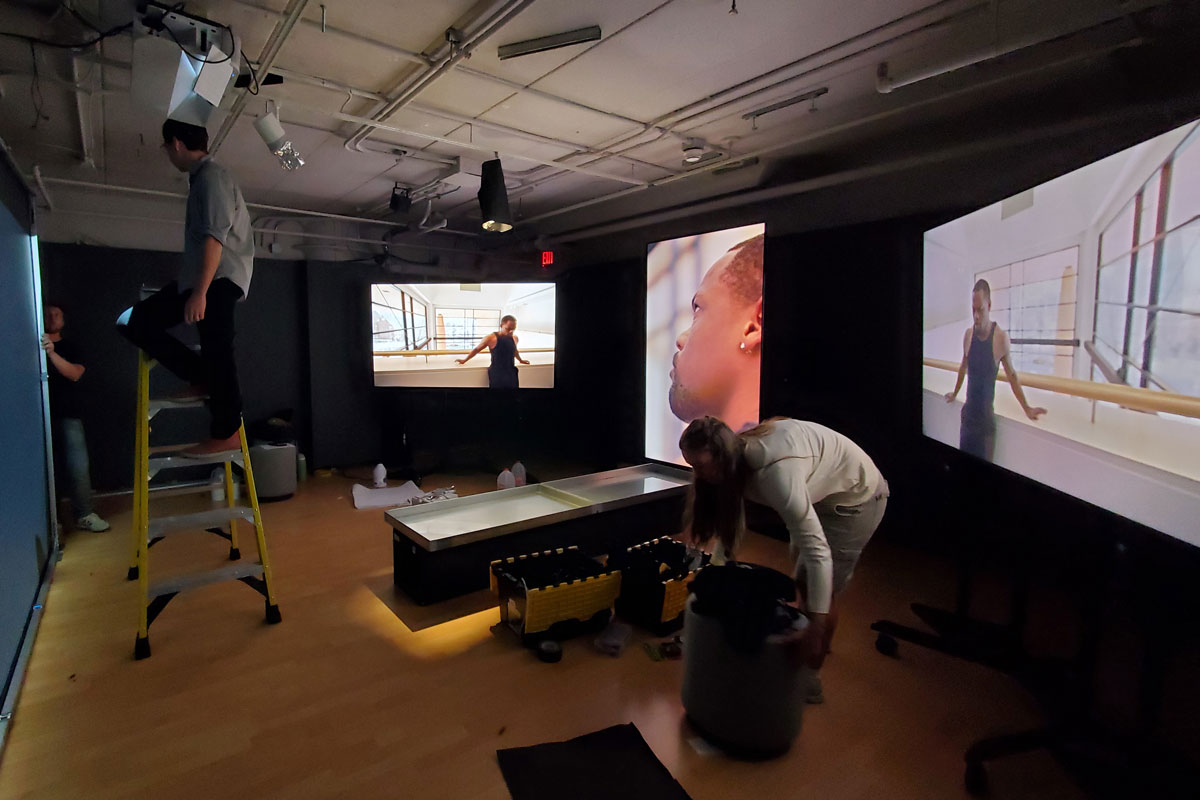CyberArts Exhibit: Four Questions with a CCI Researcher
Oct. 8, 2024
Visual artist Janet Biggs is one of the researchers included in the Commonwealth Cyber Initiative's CyberArts Exhibit 2024, now on display at Alexandria's Torpedo Factory through Jan. 26, 2025.
Biggs' team's exhibit is Hidden Within. She discusses the project and how it came together.
Why did you decide to participate in this project? Do you have personal experience with cybersecurity issues or do you simply like a challenge?

As a visual artist, I am committed to interdisciplinary research, problem solving, and collaborative production.
I’ve been working with some of the members of our CCI team for close to four years now. We have produced museum exhibitions, written papers for a mathematics journal and physics conference, and presented public panels on our process and projects.
It was both exciting and challenging for our team to continue researching together, and to produce a new multimedia art installation for CCI’s Arts and Design Program.
Personally, I do not have a background in cybersecurity, but like many people who engage with and communicate through cybertechnology, I have experienced security challenges. Scale that up globally, and it’s easy to imagine how concerns about cybersecurity have infiltrated into people’s consciousness.
What did you learn about cybersecurity during this process?
Inspired by the ways data can be encrypted and sent via light sources, our team researched steganography, the process in which digital information is hidden, detected, and extracted from other digital information.
We were especially interested in moiré as a tool of steganography. Moiré is an effect that happens when two patterns overlap, creating new interference imagery, frequencies, or sounds.
What do you want people to understand about your project?

Through our research, we considered subjective viewpoints behind detection and extraction.
Cybersecurity is based on perceiving a threat. We began thinking of cybersecurity as a tool that reflects on those perceiving the threat as much as on the threat itself. This led us to use imagery that could be interpreted in multiple ways.
How did you develop the idea?
We chose to develop and present our ideas as a multi-screen art installation, using synchronized video, objects, and sound.
We filmed three distinct subjects:
- Davian Robinson, a visually-impaired dancer who uses echolocation to navigate spaces.
- Nature images shot in the Peruvian headwaters of the Amazon.
- The Gregory Guard, Virginia Tech’s elite silent rifle drill team.
Each of these subjects could be interpreted as presenting a threat or an opportunity.
Generated by the video imagery, we developed a spatialized soundscape that is played over multiple speakers in the room, as well as through a number of speakers attached to a water table. These speakers, or exciters, produce vibrations, creating patterns in the water.
For more information about the CyberArts Exhibit, contact CCI Communications and Marketing Director Michele McDonald at mmcdonald@vt.edu.


